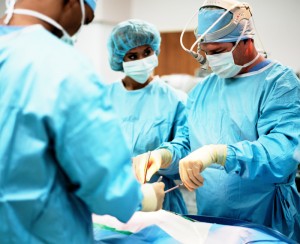
Diabetic patients who undergo heart bypass surgery are living longer and have much better long-term outcomes when cardiothoracic surgeons use arteries rather than veins for the bypasses, according to a new study published online by The Annals of Thoracic Surgery.
Key findings in this study show more diabetic patients survive when only arteries are used for bypasses during coronary artery bypass grafting (CABG) surgery. Diabetic patients experience fewer long-term complications from total arterial revascularization (TAR)/CABG than from conventional CABG. TAR/CABG can be performed successfully by any well-trained cardiothoracic surgeon.
“Going into this study, we believed that diabetic patients would do better using total arterial techniques,” said James Tatoulis, MD, FRACS, from the Royal Melbourne Hospital in Australia. “But it was gratifying to actually prove it and also be able to document the significant magnitude of the difference.”
Dr. Tatoulis and colleagues in Melbourne examined more than 63,000 cardiac surgical cases from the Australian and New Zealand Society of Cardiothoracic Surgeons (ANZSCTS) Database. In their review, they identified 34,181 patients who underwent CABG surgery for the first time from 2001 to 2012. Of those, 2,017 were diabetic patients who had CABG using only arteries (TAR) and 1,967 diabetic patients who had conventional CABG, predominantly using veins.
This study showed that when TAR/CABG is used for diabetic patients, long-term survival improves significantly. For every 100 diabetic patients undergoing CABG surgery, four more will be alive at 10 years when arteries are used for the bypasses rather than just one arterial graft together with veins (82 vs. 78, respectively), explained Dr. Tatoulis.
A strong correlation exists between coronary artery disease (CAD) and diabetes. According to the American Heart Association, adults with diabetes are two to four times more likely to have heart disease than adults without diabetes. In addition, the American Diabetes Association estimates that 29.1 million Americans have diabetes, with 1.4 million more being diagnosed each year.
“With the incidence of diabetes increasing in the United States, happening together with the continued improvement in life expectancy, it is probable that there will be more and more diabetic patients requiring CABG surgery in the future,” said Dr. Tatoulis. “Thus, the superiority of TAR/CABG will assume progressive importance.”
Another important finding from the study was that TAR/CABG can be performed on diabetic patients without increasing the rate of complications, such as angina (chest pain), heart attacks, heart failure, and hospital readmissions.
CABG surgery has been performed for more than 50 years. In the US, it is one of the most common major surgeries, with almost 400,000 CABG surgeries performed each year, according to the US Centers for Disease Control and Prevention.
CABG surgery is designed to help restore blood flow to the hearts of patients with CAD. CAD is caused by a buildup of plaque (calcium, fat, cholesterol, etc.) in the walls of the arteries that supply blood to the heart and other parts of the body. During CABG surgery, a blood vessel is removed or redirected from one area of the body and placed around the narrowed area to “bypass” the blockages and restore blood flow to the heart muscle. This vessel is called a graft.
Dr. Tatoulis said the average conventional CABG surgery involves three to four grafts: one artery is usually used, along with vein grafts from the leg or thigh for the remaining new bypasses. In TAR/CABG surgery, only arteries are used.
Currently, only 5% of all patients in the US who undergo CABG surgery receive multiple arterial grafts, stated Dr. Tatoulis. “As a result, there is room for a much larger proportion of patients to have this type of coronary surgery and receive the benefits of a longer life, better quality of life, and reduced medical costs,” he said.
The study also confirmed that TAR is achievable and can be performed by any well-trained cardiothoracic surgeon. “TAR/CABG is definitely within each cardiothoracic surgeon’s ability and should be part of their repertoire,” explained Dr. Tatoulis
Source : http://bit.ly/29Iv6pl


